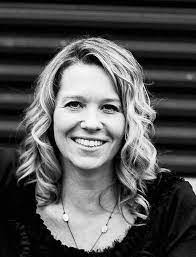By Roger Barbee
Almost four years ago Mary Ann my wife purchased our house on Lake Norman. I had not physically seen it, but the photographs supported her wisdom in choosing this house that would become our home. Some months later when I first drove into the driveway, I noticed the many large longleaf pine trees in the front yard and resolved before I had parked the car that as soon as possible I would cull them. After all, forty-two of any type of tree is too many for one yard, especially trees that drop an abundance of pine needles, cones, and pose a potential danger to our house. Because the yard had been neglected by the previous owners, I first began removing the layers of pine needles on the edges of the driveway and lawn. Before that first fall, the front yard had been cleaned of the mat of needles that had taken residency under the trees, on the driveway, and even sections of the walkway. Now it was time to turn my attention to the removal of some of the looming pines. Fortunately, some decisions are changed before damage is done.
When I made inquiries about removing some of the trees, a contractor told me his price. I swallowed hard at the monies it would take to do what I wanted, but he also told me that all the trees looked healthy and that they supported each other’s root system. They, he said, hold each other in place, so he saw no danger of any falling except in a storm such as the destructive Hugo long ago. Relieved by his advice and the unspent dollars, I went about my business settling in our new house on Lake Norman. I began riding my stationary bike on a part of the driveway, picking up pine cones and small limb debris each morning after my ride. I collected bird nests blown out of a tree by powerful wind. I became accustomed to the sound made by squirrel claws as one chased another up, down, and across the thick bark of a pine. I sat in their shade of the pines and thought of Thomas Merton’s words: ““Nothing has ever been said about God that hasn’t already been said better by the wind in the pine trees.” Over time I came to admire and value all the pine trees. Each day bird song of titmice, robins, mockingbirds, and others filled the air under the trees. By the arrival of our first winter here, I realized that the abundance of trees was more valuable than I had realized. One morning as I rode under the canopy I remembered my visits to a small, English village made famous by a poem.
Binsey is a small village upstream of the Thames River from Oxford, England, opposite Port Meadow. Saint Margaret’s Church, a small Medieval church, is a short walk from the village along a quaint lane. The church has been a place of pilgrimage for centuries and many people still visit St. Margaret’s which is thought to be the resting place of St. Frideswide and her maidens as she fled from her aggressive suitor Prince Algar. The adjacent ‘Treacle well’ is believed to contain healing waters. While I enjoyed many visits to the church and the great village pub, The Perch, Binsey changed my life when I was introduced to a Gerard Manley Hopkins’s poem. Written in 1879 by the Jesuit priest and poet, Binsey Poplars may well be the first ecological poem. In the poem Hopkins laments the felling of a row of poplar trees that had lined the lane leading from the river to the village. Hopkins writes, “O if we but knew what we do/ When we delve or hew —/ Hack and rack the growing green!”
Riding, cleaning, resting, or working under all those pine trees is a blessing that I almost ruined because of my desire to control nature instead of living with nature. That is a lesson re-learned and worthy of all living.







